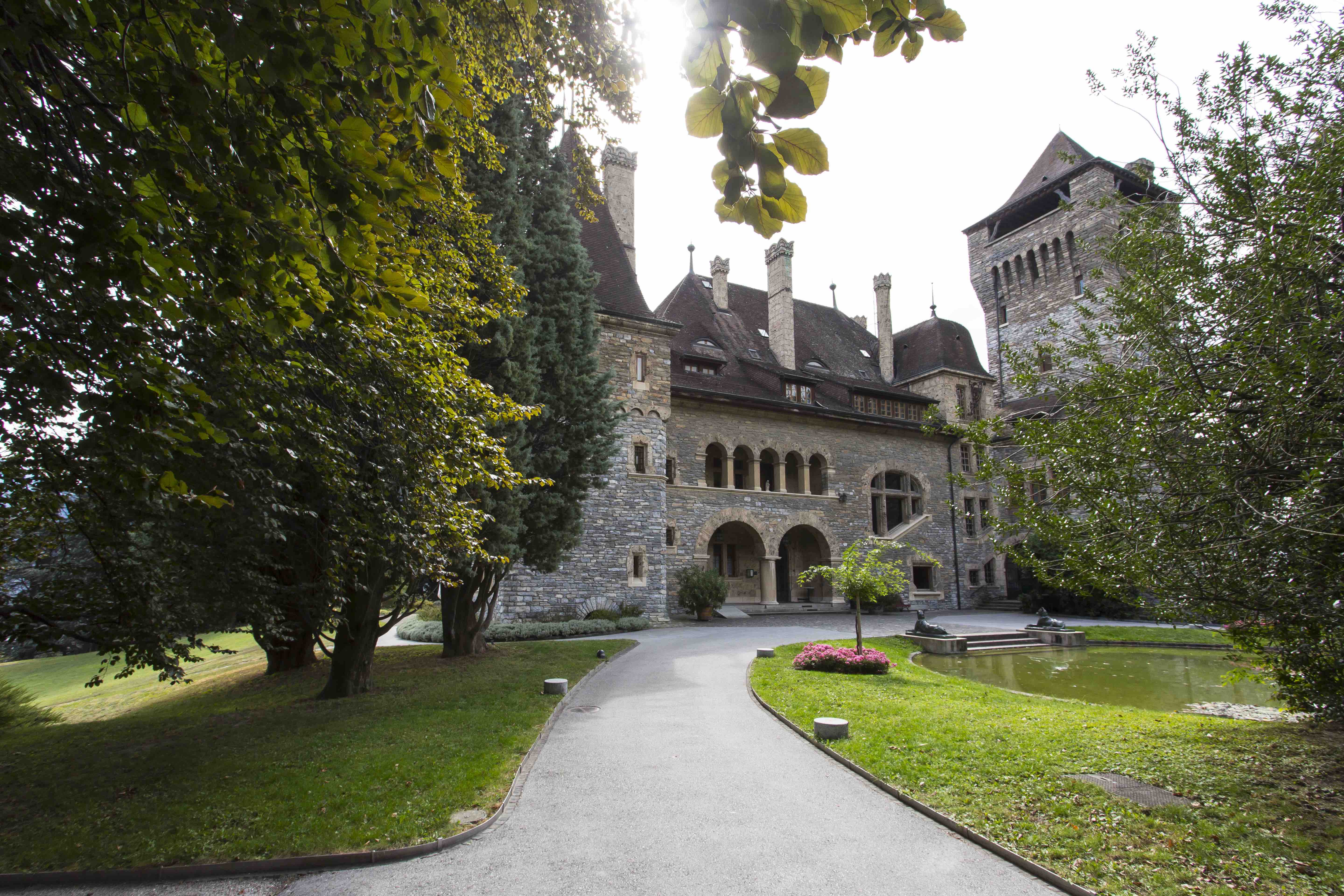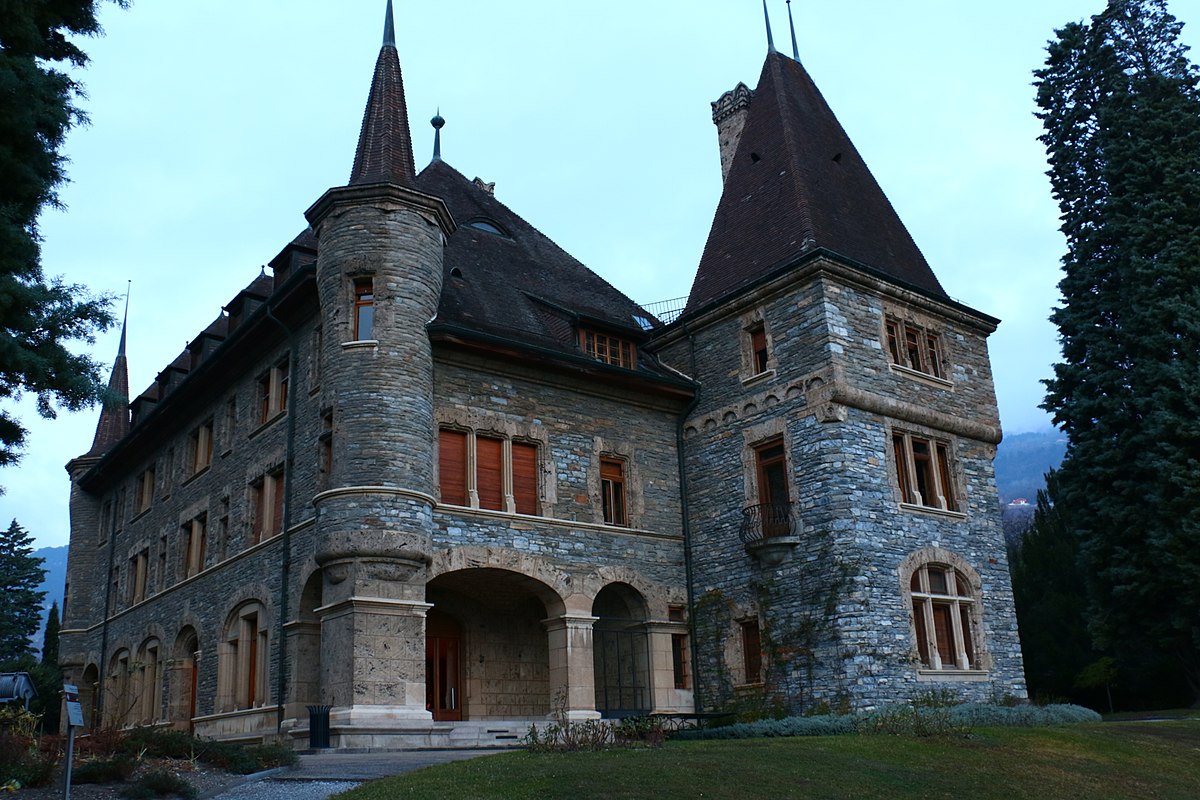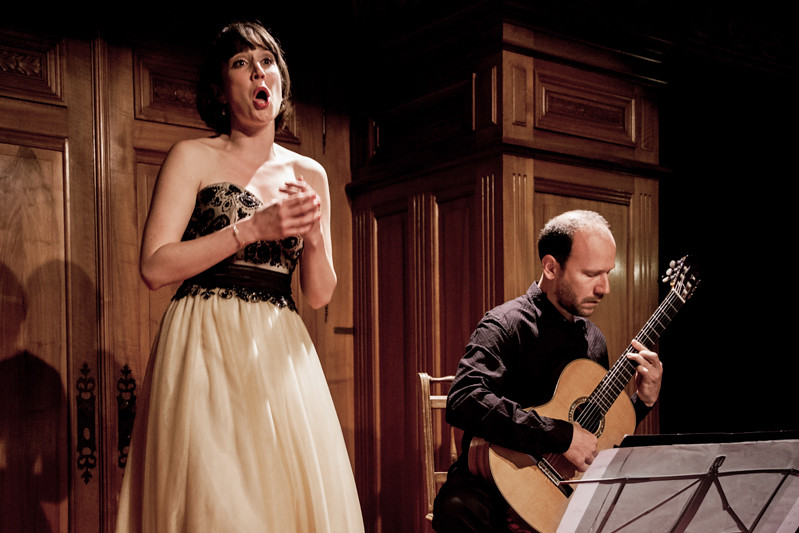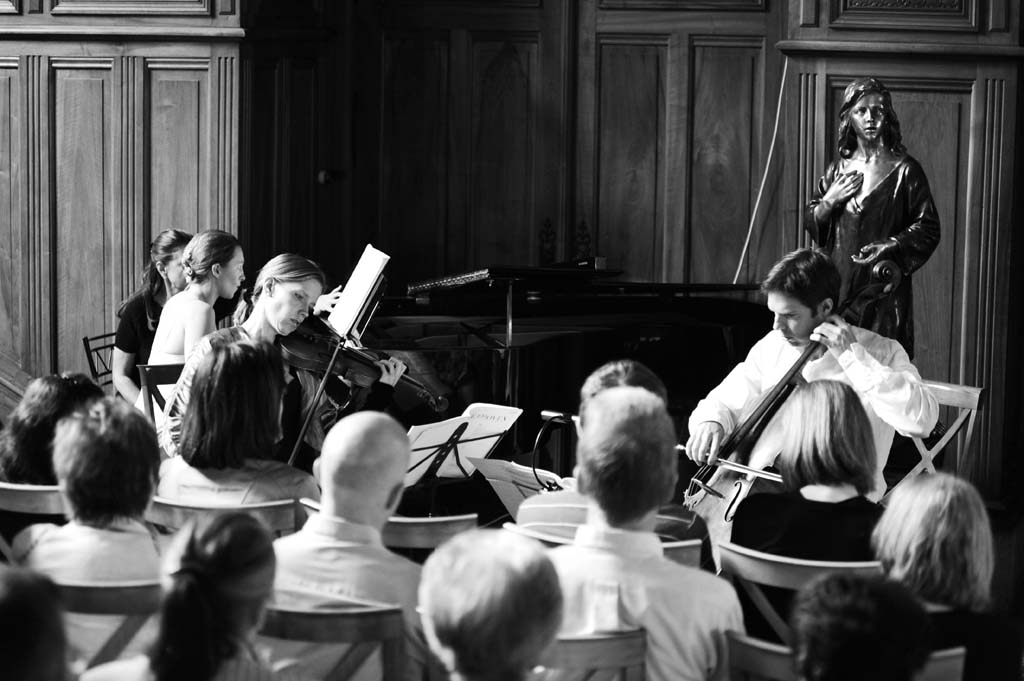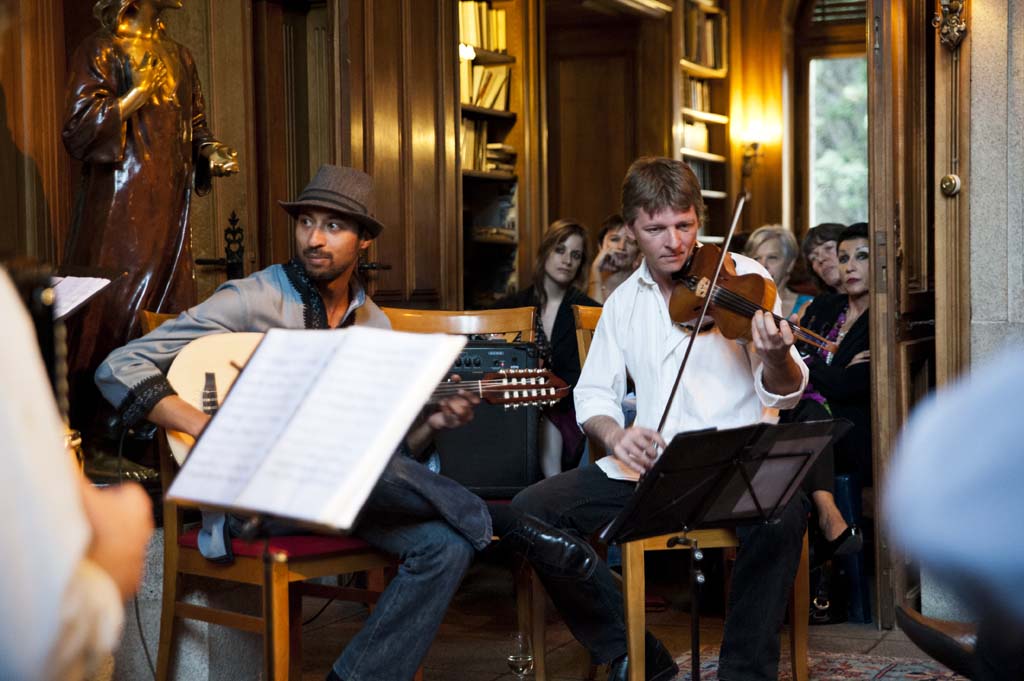Located in Sierre in the canton of Valais, Switzerland, Château Mercier has been a member of the ACCR network since 2009.
The Heritage Site
The castle was built on a hill overlooking the town of Sierre in the centre of the Valais wine-growing region. The town is situated in the Alps, in the Rhone valley, and at the symbolic linguistic border of the canton.
Respecting the castle’s history, the Mercier family kept the ancient name of ‘Pradegg’. They also intended that the castle be in keeping with the local landscape, surrounding it with a 4-hectare English-style park in a picturesque setting.
The castle was built between 1906 and 1908 by the Merciers, a well-known family of tanners from Lausanne. Originally from Aveyron in France, the family arrived in Lausanne around 1740 and founded a prosperous tannery there.
Jean-Jacques and Marie Mercier de Molin had the castle built for their family, commissioning the architect Alfred Chabloz to design it in the Valdotain style. For more than half a century, the castle served as the summer residence of Jean-Jacques and Marie Mercier de Molin and their descendants.
The Cultural Project
In 1991, the whole site – including the castle itself, the park, numerous works of art and furniture – was given to the Canton of Valais by the Mercier family. A foundation was set up in 1992 to manage, conserve and revive the site.
Major renovation works were carried out to adapt the castle to its new role, allowing it to respond to the objectives of its new owners while respecting the conditions of the donation – that it become a place for meeting, dialogue and exchange, as well as hosting receptions, seminars and cultural activities.
Activities
A place open to all cultures, and encouraging dialogue and reflection through its intimate and convivial atmosphere, Château Mercier is today home to a variety of events, either as a host or as a cultural producer.
Among the cultural events taking place at the castle are Sunday morning concerts and talks by writers and actors, and it also host an annual two-week screenwriting workshop-festival. The Rencontres Orient Occident, created in 2012, presents an annual programme of debates, conferences, film screening, storytelling, writing workshops, concerts and exhibitions, aimed at stimulating reflection on the challenges faced by countries in the Mediterranean basin.
Since 2011, an artist residency programme has been hosted in the Villa Ruffieux in the grounds of the castle. It is multidisciplinary in approach and welcomes around a dozen artists each year.
The park, open to the public all year, operates as a ‘protected workshop’ welcoming disabled young people supported by the Fondation Emera and working under the supervision of a professional gardener.
Thanks to its 23 bedrooms, all retaining their original charm despite the modernisation works, its dining rooms, lounge and conference rooms, the castle also hosts a variety of business meetings, official receptions and private parties. Its flexible and capable team includes a full-time chef, meaning the castle can offer regional cuisine based around products grown in the grounds.
Partners
Since entering the public domain, Château Mercier has continued to develop partnerships and extend its influence well beyond the Valais area. In its hospitality role, it has welcomed internationally well-known guests from the worlds of sport, culture, politics and economics. The Foundation has also forged partnerships with a variety of organisations, notably those working in youth training. Links have also been made with Hautes Ecoles in the Valais area including the Ecole Cantonale d’Art du Valais, colleges in Sion and Sierre, the Conservatoire de Musique in Sion, the companies Plumes et Pellicules and DreamAgo, the Fondation Rilke in Sierre, the Fondation Bodmer in Cologny/Geneva and various universities in Geneva, working in particular with Rencontres Orient Occident.
Thanks to its artist residency programme, links have been made with a variety of partners in Switzerland and further afield, notably the SMART foundation for sustainable development, allowing the financing of some of the scholarships offered to resident artists.

